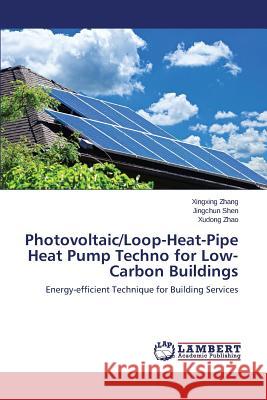Photovoltaic/Loop-Heat-Pipe Heat Pump Techno for Low-Carbon Buildings » książka
Photovoltaic/Loop-Heat-Pipe Heat Pump Techno for Low-Carbon Buildings
ISBN-13: 9783659617423 / Angielski / Miękka / 2014 / 232 str.
With the widespread deployment of solar photovoltaic (PV) and thermal devices imminent, this research aims to resolve some engineering barriers to the existing solar photovoltaic/thermal (PV/T) technologies by incorporating an innovative loop heat pipe (LHP) and a typical heat pump. In addition, a coated aluminium-alloy (Al-alloy) sheet replaces the conventional baseboard for the PV cells to improve heat exportation. As a result, this research has developed a novel solar PV/LHP heat pump system to maximise the electrical output of a PV module and generate an additional amount of heat simultaneously. The overall investigation follows procedures for a critical literature review, optimal concept design, mathematical derivation, the development of simulation models, prototype fabrication, laboratory-controlled and field testing, simulation model validation and socio-economic analysis. The research results are expected to configure feasible solutions for future PV/T technologies and develop a new solar-driven heating system. The core technologies may enable a significant reduction in or even elimination of the carbon footprint in the built environment.
With the widespread deployment of solar photovoltaic (PV) and thermal devices imminent, this research aims to resolve some engineering barriers to the existing solar photovoltaic/thermal (PV/T) technologies by incorporating an innovative loop heat pipe (LHP) and a typical heat pump. In addition, a coated aluminium-alloy (Al-alloy) sheet replaces the conventional baseboard for the PV cells to improve heat exportation. As a result, this research has developed a novel solar PV/LHP heat pump system to maximise the electrical output of a PV module and generate an additional amount of heat simultaneously. The overall investigation follows procedures for a critical literature review, optimal concept design, mathematical derivation, the development of simulation models, prototype fabrication, laboratory-controlled and field testing, simulation model validation and socio-economic analysis. The research results are expected to configure feasible solutions for future PV/T technologies and develop a new solar-driven heating system. The core technologies may enable a significant reduction in or even elimination of the carbon footprint in the built environment.











